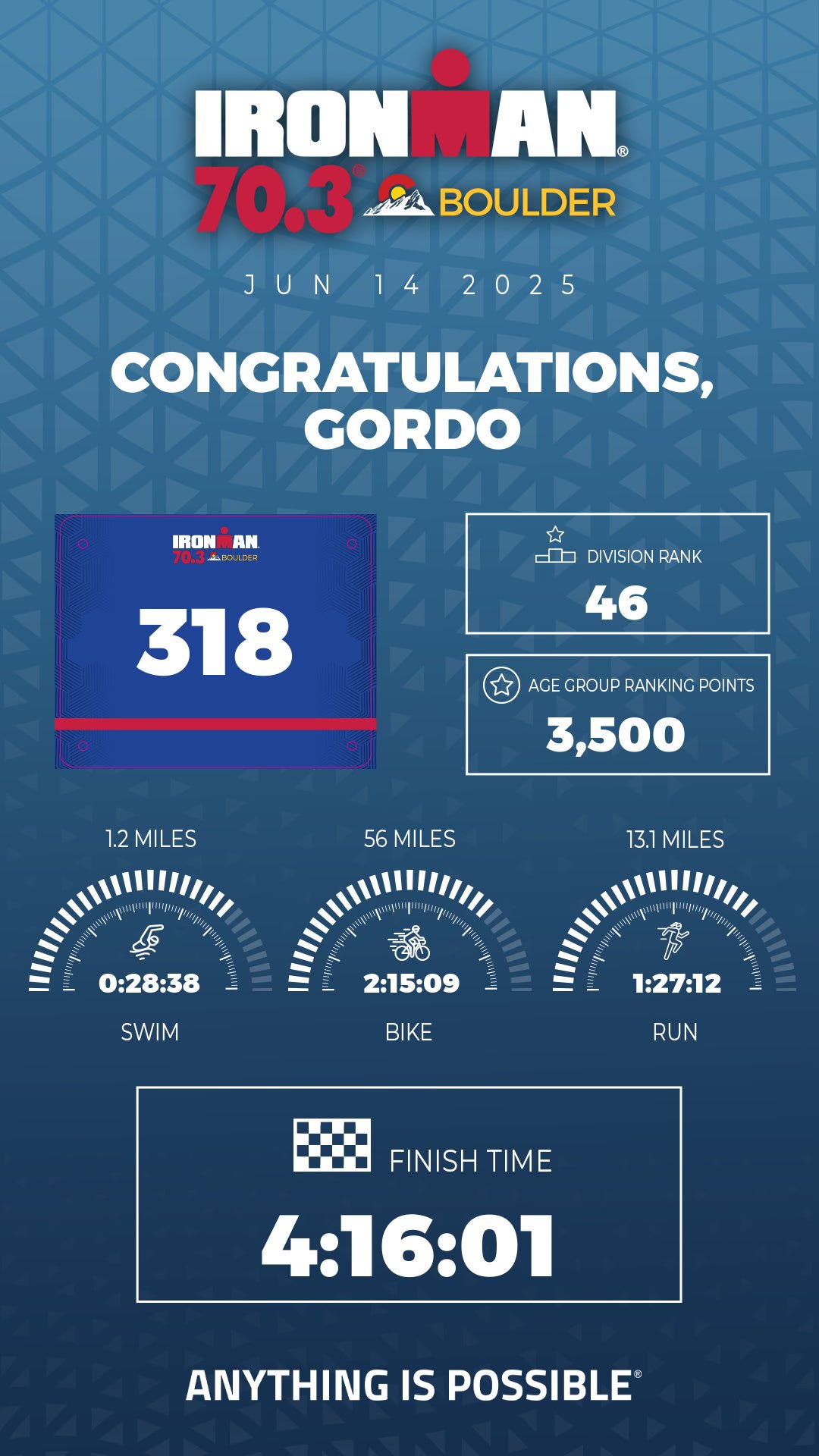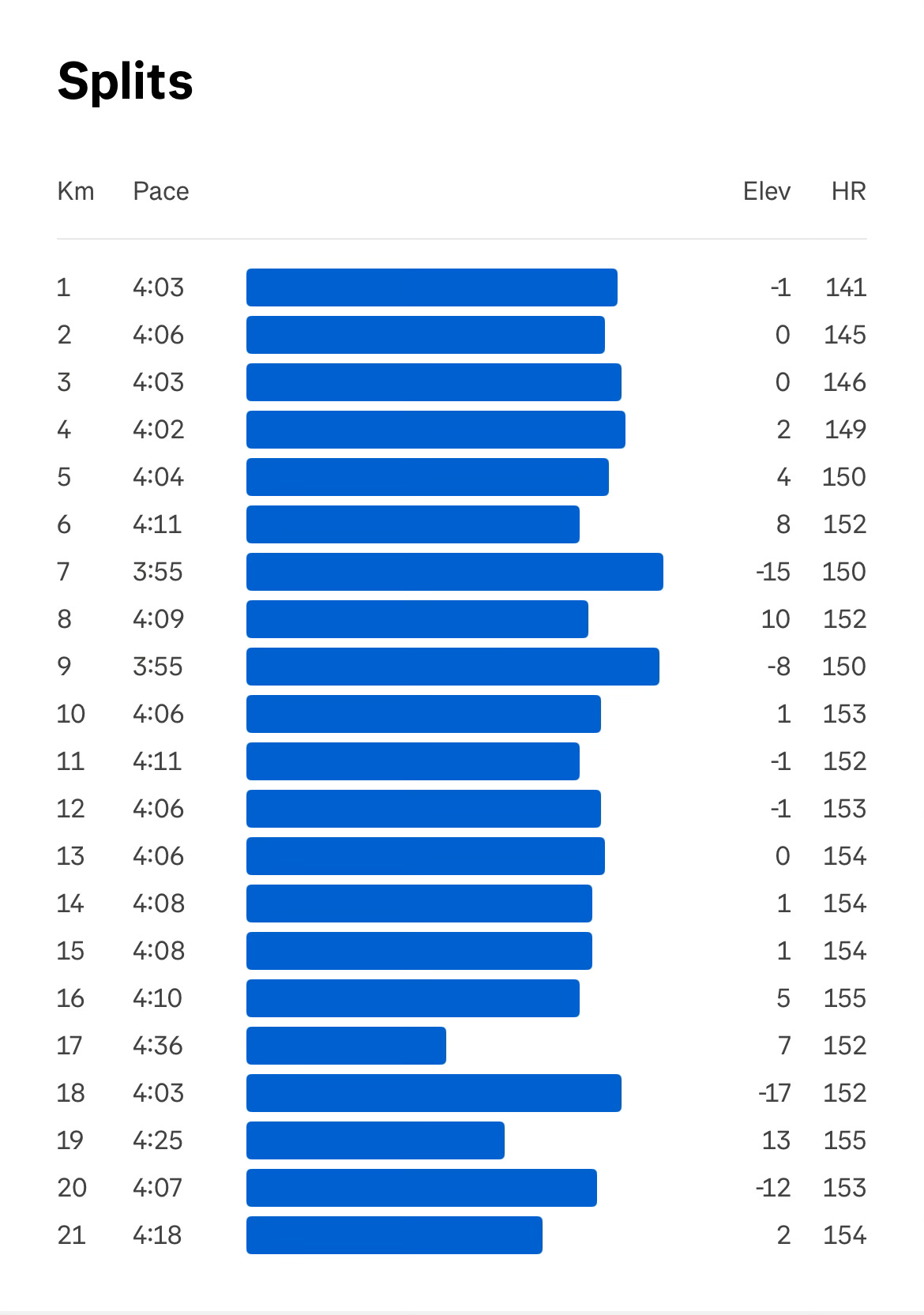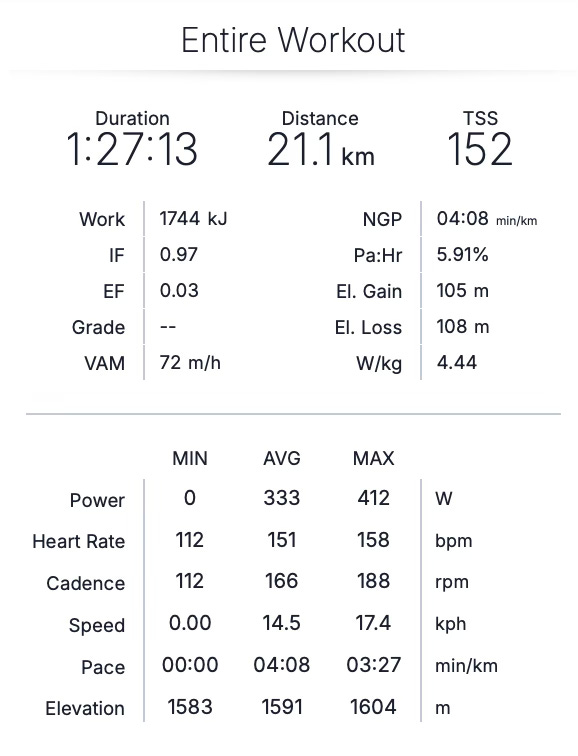
In Part One, I made my case for the following:
Base your 70.3 bike pacing off an Olympic Distance triathlon where you ran well.
Take your average power from the run-well Olympic Distance triathlon and ride all segments under that power.
I explained the difference between pacing in training and pacing while racing.
When I am training, I notice speed but don’t care about it. My goal is time at intensity.
On race day, I am paying close attention to speed, wind resistance and effort. If my bike speed is good enough then I want to conserve energy. I know my incremental energy is best saved for the run, where there is a linear relationship between effort and speed.
If you want to beat fast athletes then you should pay close attention to what follows. These techniques must be practiced in low-priority races.
The quality of your run is a function of your general capacity, swim fitness1 and bike execution.
Most everyone is running below their training paces, especially on a hot day.
You can go a lot faster, if you learn how to race.
Treat It Like A Workout, Again
Two tips to burn into your brain:
The longer the race, the more it becomes a sub-maximal effort.
The longer the race, the more careful we have to be with spiking effort.
The Boulder course is two laps. Each lap breaks down into four segments:
Climb to the highway.
Along the highway.
Descend.
Rollers and Flat Finish.
At my speed, this results in the following workout:
Settle out of T1
[2x] 4x15 minutes (variable pacing, see below)
Settle into T2
Go Fast When The Race Is Slow
The slowest part of the race is the 3rd quarter of the run. We are going to discuss running fast in a future article.
For now, have a look at the course profile and notice the climb to the highway segment. On my file it is between 0:05-0:20 & 1:08-1:23 (also, identified with the green speed line).
Before the race, Coach Julie and I discussed a strategy based on my Olympic Distance Power of 260w
To The Top of the Course (250-255w, Zone 3)
Descend and Flat (210-220w, Zone 1)
Rollers and Flat (245-250w, Zone 2+/3-)
These were based on the segments in last week’s case study of 272w, 212w and 272w, respectively. The 70.3 course is similar, with each loop being a bit longer.
The Plan Encounters The Race
On the Boulder course, we navigate our way out of the transition area and deal with a bunch of early turns. While doing that…
Sort your shoes.
Settle in.
Do not go bananas.
It was five minutes at ~190 watts. Now it was time to get to work.
Each of my four segments lasts for ~15 minutes. Power is shown in watts as (Lap 1/Lap 2).
Climb to the highway (253w / 275w).
Along the highway (244w / 241w).
Descend (202w / 208w).
Rollers and Flat Finish (244w / 244w).
Over on my YouTube channel, I have been publishing a series on Heat, Altitude and Humidity. One of the punchlines of that series is…
There’s what you can do, and…
…there’s what you can do in the heat.
Race day was clear, hot and the winds were calm. Having done many runs around the Boulder Reservoir, I knew the run would prove decisive. I had four large bottles on my bike and it was heavy out of T1.2
With a hot run to come, I decided to ride easier than planned. From 0:30 to 1:05 ride time, I drank to the point of discomfort and managed my heart rate down.
Coming through the 25 mile mark, my speed was high and my moderate approach hadn’t cost me much velocity. At the start of the second lap, at the slowest part of the bike course, I put in a Zone 4 interval.3
If you haven’t run well off the bike, then don’t put in a tactical interval. My tactical interval training is done in low-priority races that are shorter than my goal event.
Real Talk on Running off the Bike
The run is a reality check on our bike pacing.
If our run sucks then it does not matter how the bike felt, or it was hot, or we dropped our nutrition… all that matters is we gave away performance because we rode too intensely for our fitness and the conditions.
Great races are characterized by a material increase in heart rate across the event. The increase in effort allows us to run close to the equivalent training pace (jacked up HRs due to dehydration don’t count).
Start by comparing averages.
Comparing the bike (136 bpm) and run (151 bpm) averages we see an increase of 15 bpm. As an elite, my heart rate gap was closer to 10 bpm (150 bpm & 161 bpm).
This race, I gambled by riding the first lap of the bike a little too easy. This time it worked out. Next time, it could play out differently.
Whatever happens:
No excuses.
Use race information to keep iterating towards better.
See you at the races.
Back to How To Race
Back to Table of Contents
Why do I swim a lot? Because I want to get to work quickly on the bike then run well.
You can find a Heat Seminar on my X feed. The post quotes another thread about staying cool.
Speaking with the overall Men’s winner after the race (Sam Appleton). He laid down his interval in the same place as me, only his effort was done on the first lap. With the early interval, Sam established a gap, which he held to the finish line.









I wish you all the best for your race in Roth this week, Gordo.